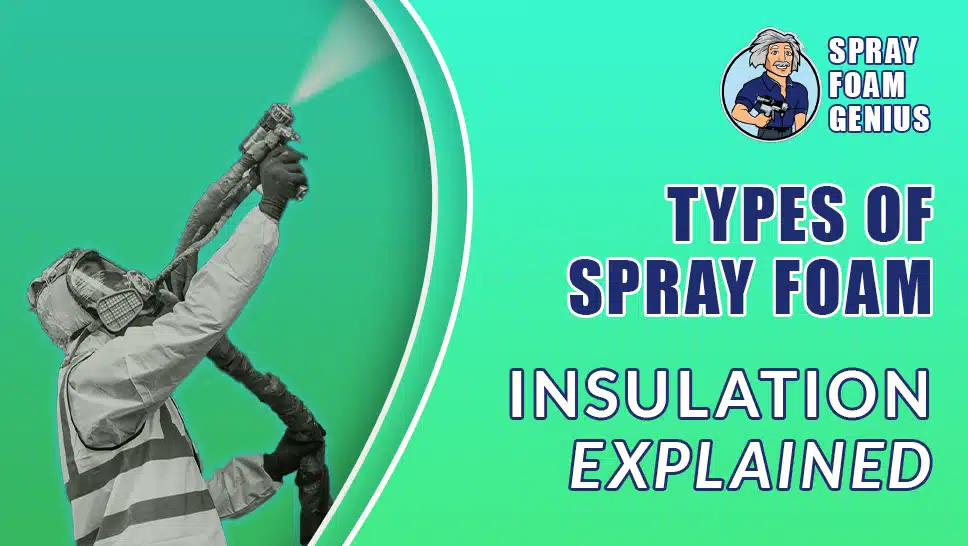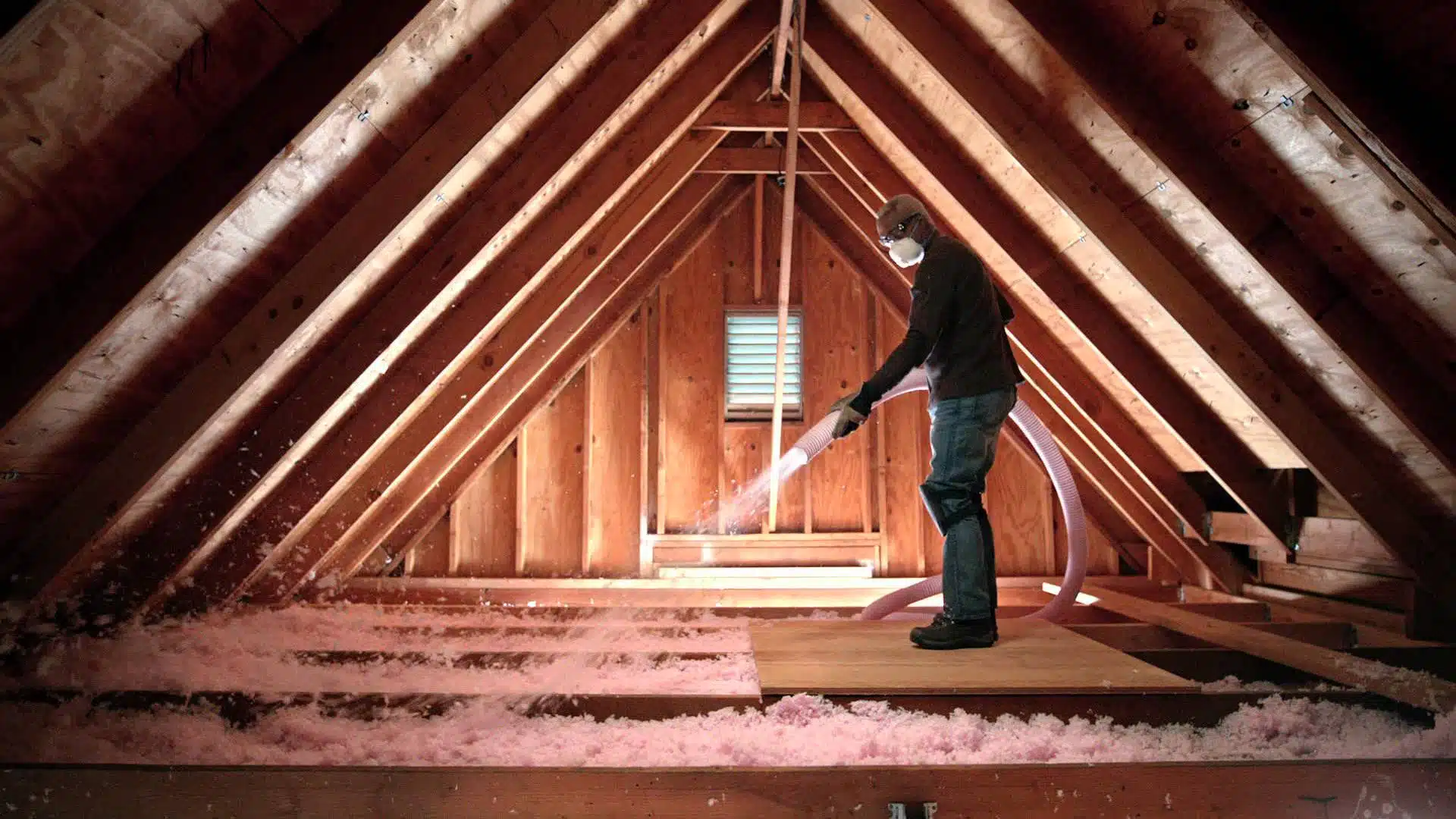
Spray foam insulation has become a prominent choice for enhancing energy efficiency and comfort in homes and commercial buildings. Known for its superior insulating properties, spray foam can transform spaces by creating an effective barrier against air leaks and moisture. However, with various types of spray foam insulation available, choosing the right one can be challenging. This guide provides an in-depth look at the two main types of spray foam insulation—open-cell and closed-cell—helping you make an informed decision about the best insulation solution for your needs.
What is Spray Foam Insulation?
Spray foam insulation is a versatile material that starts as a liquid and expands into a foam upon application. This expansion creates a seamless layer that fills gaps, cracks, and cavities, offering a robust solution for insulating and sealing various spaces. Unlike traditional insulation materials such as fiberglass or cellulose, spray foam expands to cover all voids, resulting in a continuous layer of insulation that helps to improve energy efficiency, comfort, and overall indoor air quality.
How Spray Foam Insulation Works
When applied, spray foam insulation is delivered as a liquid through a spray gun. It reacts with air and expands rapidly, forming a dense foam that adheres to surfaces and fills gaps. This process creates a strong, insulating barrier that minimizes air leakage and helps maintain consistent indoor temperatures.
Types of Spray Foam Insulation
Spray foam insulation is primarily categorized into two types: Open-Cell Spray Foam and Closed-Cell Spray Foam. Each type has unique properties, advantages, and ideal applications. Understanding these differences will help you select the most suitable insulation for your specific needs.
Open-Cell Spray Foam Insulation
Open-Cell Spray Foam is characterized by its less dense, softer, and more flexible structure. The foam cells are not completely closed, which allows the foam to expand and fill spaces more easily.
Characteristics of Open-Cell Spray Foam
- Structure and Density: Open-cell foam is lighter and less dense than closed-cell foam. Its air-filled cells create a softer, more pliable material that can easily conform to irregular surfaces.
- Air Barrier: Open-cell foam acts as an effective air barrier, reducing drafts and air leaks. However, it does not provide a moisture barrier, so it is less effective in preventing water vapor from passing through.
- Soundproofing Qualities: Due to its porous structure, open-cell foam is excellent at absorbing sound and reducing noise transmission, making it a popular choice for soundproofing applications.
- Flexibility: After curing, open-cell foam remains flexible, which can accommodate structural movements without cracking or breaking.
Advantages of Open-Cell Spray Foam
- Cost-Effective: Generally, open-cell foam is more affordable than closed-cell foam, making it a cost-effective option for large-scale projects.
- Improved Air Quality: By reducing air leaks, open-cell foam helps enhance indoor air quality by limiting the entry of outdoor pollutants.
- Ease of Application: The flexibility and lighter nature of open-cell foam make it easier to apply in tight spaces and complex configurations.
Ideal Applications for Open-Cell Spray Foam
Open-cell spray foam is best suited for interior applications where moisture resistance is less critical. Common uses include:
- Attics and Ceilings: Provides effective insulation and soundproofing in attic spaces and ceilings.
- Wall Cavities: Ideal for insulating walls where flexibility and sound absorption are desired.
- Interior Spaces: Enhances comfort and energy efficiency in various indoor environments.
Closed-Cell Spray Foam Insulation
Closed-Cell Spray Foam features a denser, more rigid structure with fully closed cells. This type of foam provides a robust barrier against air and moisture infiltration.
Characteristics of Closed-Cell Spray Foam
- Structure and Density: Closed-cell foam is denser and more rigid compared to open-cell foam. The closed cells are tightly packed, creating a solid material with high insulation values.
- Moisture Barrier: Closed-cell foam serves as both an air and moisture barrier, effectively preventing water vapor from passing through and reducing the risk of mold and mildew.
- Durability: The rigid nature of closed-cell foam makes it highly durable and resistant to physical damage, providing additional structural support to the building.
Advantages of Closed-Cell Spray Foam
- High R-Value: Closed-cell foam offers a higher R-value per inch of thickness, delivering superior thermal insulation and energy efficiency.
- Moisture Resistance: Its moisture barrier properties help protect against water damage and mold growth, making it suitable for high-humidity areas.
- Structural Support: The rigidity of closed-cell foam can enhance the structural integrity of walls and roofs, adding strength to the building.
Ideal Applications for Closed-Cell Spray Foam
Closed-cell spray foam is best suited for applications where high insulation values and moisture resistance are critical. Common uses include:
- Exterior Walls: Provides excellent insulation and protection for exterior walls, particularly in regions with high humidity or extreme weather conditions.
- Roof Spaces: Ideal for roofing systems where moisture control and additional strength are required.
- Basements and Crawl Spaces: Effective in preventing moisture problems and improving energy efficiency in lower levels of buildings.
Choosing the Right Spray Foam Insulation

Selecting the appropriate type of spray foam insulation depends on several factors, including climate, insulation needs, and budget. Here’s a guide to help you make the best choice:
1. Climate and Moisture Levels
- High Humidity Areas: Closed-cell foam is the better choice in regions with high humidity or where moisture resistance is essential. Its ability to act as a moisture barrier helps prevent issues related to water infiltration.
- Dry Climates: Open-cell foam can be sufficient in areas with lower moisture levels and where cost is a major consideration. Its air barrier properties are still effective in reducing drafts and improving comfort.
2. Insulation Needs
- Higher R-Value Required: For applications requiring higher insulation values and enhanced energy efficiency, closed-cell foam is the ideal option. Its higher R-value per inch provides superior thermal protection.
- Soundproofing: If soundproofing is a primary concern, open-cell foam is advantageous due to its ability to absorb sound and reduce noise transmission.
3. Budget Considerations
- Cost-Effectiveness: Open-cell foam is generally more affordable and may be a better choice for larger areas or budget-conscious projects.
- Long-Term Investment: Closed-cell foam, although more expensive, offers greater insulation efficiency and durability, potentially resulting in long-term savings through reduced energy costs and enhanced building protection.
Application Process and Considerations
The application of spray foam insulation requires careful attention to ensure optimal performance and safety. Here are some key considerations:
1. Professional Installation
Spray foam insulation should be applied by trained and certified professionals to ensure proper installation and safety. Professional installers have the expertise and equipment needed to achieve the best results and avoid common issues such as incomplete coverage or improper curing.
2. Safety Measures
- Ventilation: Proper ventilation is crucial during the application of spray foam to avoid inhaling fumes. Ensure that the area is well-ventilated or use appropriate ventilation equipment.
- Protective Gear: Installers should wear protective clothing, gloves, and respiratory equipment to safeguard against potential exposure to chemicals.
3. Post-Installation
- Curing Time: Allow adequate time for the foam to cure properly before using the space. Follow the manufacturer’s guidelines for curing times to ensure optimal performance.
- Inspection: Conduct a thorough inspection after application to confirm that the foam has been applied evenly and that there are no gaps or areas requiring additional coverage.
Enhance your business success today!
Spray foam insulation is a powerful tool for improving energy efficiency, comfort, and indoor air quality. By understanding the differences between open-cell and closed-cell spray foam, you can make an informed decision that aligns with your specific needs and conditions. Whether you’re looking to enhance insulation, address moisture concerns, or improve soundproofing, spray foam insulation offers a range of benefits to meet your requirements.
For expert advice on selecting and installing spray foam insulation, or if you have any questions about our services, please don’t hesitate to reach out. At Spray Foam Genius Marketing, we are dedicated to helping you find the best insulation solutions tailored to your needs.
Contact us
For more information on spray foam insulation and how our services can benefit your project, Call us at 877-840-FOAM for the USA and 844-741-FOAM for Canada visit our website at sprayfoamgeniusmarketing.com or email us at [email protected] to get started.
Let us assist you in achieving the ideal insulation solution for your home or business.
- 5 Google My Business Hacks to Double Your Leads for Spray Foam Insulation Contractors - January 14, 2025
- Why Spray Foam Contractors Cannot Ignore Reputation Management in 2025 - January 13, 2025
- Local SEO Secrets Every Spray Foam Contractor Must Know to Win in 2025 - January 13, 2025

